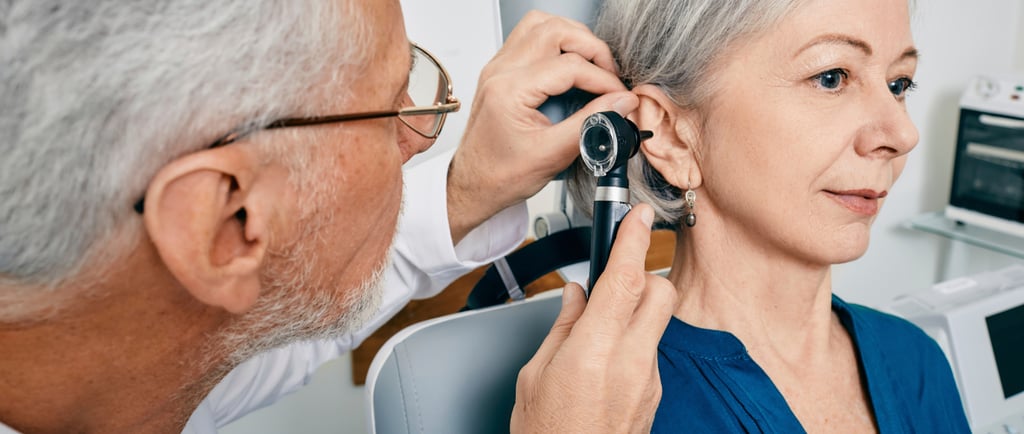Why Do Some People Have Dry Earwax While Others Don’t?
What’s the Difference Between Dry and Wet Earwax?
Why Do Some People Have Dry Earwax While Others Don’t?
A Genetic Journey
Did you know that the type of earwax you have is largely determined by genetics? Some people have wet earwax, while others have dry earwax. It might sound trivial, but this quirky difference can tell us a lot about the fascinating world of human genetics. In this post, we’ll explore why some people have dry earwax and others have wet earwax, diving into the genetic factors that control it.
What’s the Difference Between Dry and Wet Earwax?
Before we get into the science, let’s start with the basics: what is earwax, and why do we have it?
Earwax is a natural substance produced by glands in the ear canal. Its primary job is to protect the ear by trapping dust, debris, and bacteria, preventing them from getting deeper into the ear. It also helps to keep the ear canal moist and prevents itching.
There are two types of earwax:
Wet earwax: Typically yellow or brown, this is the most common type found in people of European and African descent.
Dry earwax: Light-coloured, flaky, and crumbly, this is more common in people of East Asian descent, such as Chinese, Japanese, and Korean populations.
Now, let’s dive into the genetic factor that determines whether you have wet or dry earwax!
Genetics: The Key to Earwax Types
Believe it or not, earwax type is determined by a single gene: the ABCC11 gene. This gene plays a crucial role in the production of earwax, influencing whether it is wet or dry.
Wet earwax: If you have wet earwax, it’s because you carry the dominant version of the ABCC11 gene. This gene causes the glands in your ears to produce a thicker, more oily substance—hence the wet earwax.
Dry earwax: If you have dry earwax, you likely have a mutated version of the ABCC11 gene. This mutation leads to the production of less oily earwax, resulting in a dry, flaky consistency.
What’s interesting is that the ABCC11 gene can even predict other aspects of your body. For example, it’s also linked to the production of sweat in your armpits and your likelihood of body odour. People with dry earwax are generally less likely to have strong body odor because of this gene mutation.
If you're concerned about the build-up of earwax, it might be time to explore professional ear care services. Our Ear Health Assessment can help identify whether you're experiencing excessive wax build-up, and our Ear Cleaning Services are available to safely remove any blockages and improve ear health.
The Evolutionary Perspective: Why Does It Matter?
You might be wondering, “Why does the ABCC11 gene cause this variation, and how does it relate to human evolution?”
The genetic divergence that led to wet and dry earwax types is thought to have emerged as early humans adapted to different environments. Researchers believe that the wet earwax gene was advantageous in warmer, more humid climates, where it helped keep the ears moist and protected from the elements. On the other hand, dry earwax may have been more beneficial in colder, drier climates, where it would have been less prone to trapping dust and moisture.
In fact, dry earwax is believed to be more common in East Asia, where people historically lived in cooler, drier climates. Meanwhile, populations in Europe and Africa, where temperatures are warmer, tend to have wetter earwax. It’s a fascinating example of how our bodies have adapted to the environments in which our ancestors lived!
If you're interested in learning more about how your ear health ties into your genetics or how to protect your ears in extreme environments, consider scheduling a consultation with our experts at Wax in Wax out!
Can You Change Your Earwax Type?
Unfortunately, there's no way to change the type of earwax you have—it's purely genetic. Whether your earwax is wet or dry is hardwired into your DNA, and no amount of lifestyle changes or ear care practices will alter it. However, this doesn't mean your ear health is at risk, as both types of earwax perform the same basic function: protecting your ears.
If you find that your earwax is excessive or problematic, there are safe ways to remove it, regardless of the type. Always remember to avoid inserting cotton swabs deep into the ear canal, as this can push the wax further in and cause damage.
Fun Fact: Earwax and Your Ancestors
In addition to helping you understand your genetic makeup, knowing the type of earwax you have can also give you a fun glimpse into your family history. For example, if you have dry earwax, it might indicate a genetic lineage from East Asia, while wet earwax could be more common in people with European or African ancestry. It's like a tiny window into your ancestral past, all thanks to a small gene in your body!
Conclusion: The Hidden Science of Earwax
While earwax might not be the most glamorous subject, it’s a prime example of how genetics shape our bodies in subtle, yet impactful, ways. Whether you have wet or dry earwax, it’s simply a reflection of the genes passed down through generations. Understanding these genetic variations can give you a deeper appreciation for the complexity of human evolution.
Next time you clean your ears (or decide to leave it to nature), remember that your earwax type is much more than just a quirky detail—it’s a fascinating story written into your DNA.
And if you’re looking to ensure your ear health stays on track, don't forget to explore our professional ear care services, designed to help you maintain optimal ear hygiene!
Contact
© 2021. All rights reserved.


75 Tottenham Ln, N8 9BE


